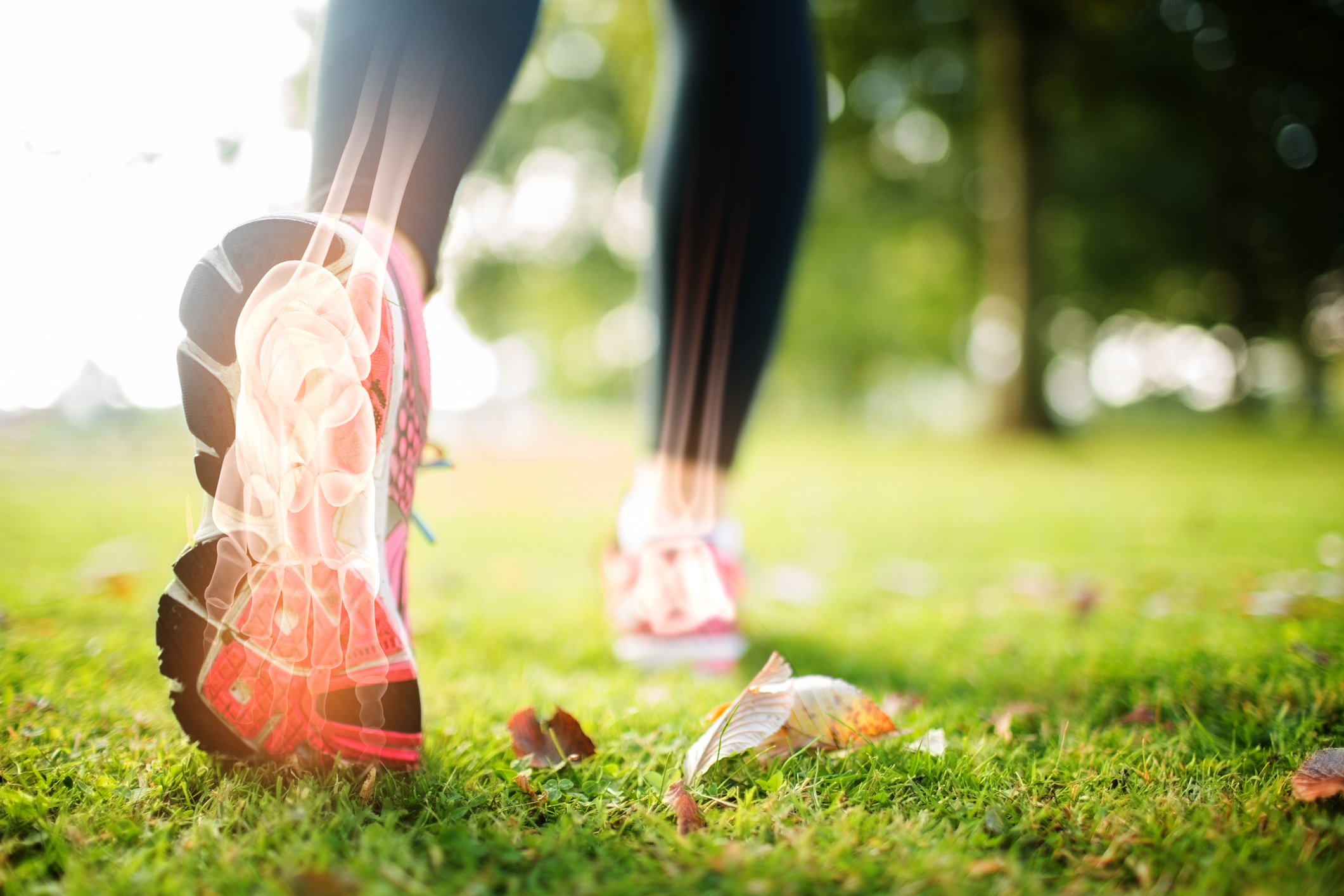From a physiological perspective, long-distance running performance is determined by the interaction of three factors: maximal oxygen uptake, the highest oxygen uptake that can be sustained (at steady-state) and running economy (the amount of oxygen required to transport the body mass over a given distance). While each one of these factors is important to performance, running economy can be improved in the time taken to change a pair of shoes.
Highly cushioned running shoes, which have been shown to considerably improve running economy, have gained the title of “super shoes” and are used by runners around the world.
However, research examining their potential performance-enhancing effects has been performed with the athlete in a well-rested state, which is not typical. For example, during running, the body is subjected to substantial vertical loading (equivalent to approximately 2-3 times body weight). During the course of a marathon, in which a runner may strike the ground >35,000 times, the accumulative impact load may cause microscopic damage to skeletal muscle, altering its structure. Similarly, muscle damage may be observed during the course of a normal endurance-training program where tissue strain supersedes tissue tolerance — think plyometrics, strength training, downhill running or even high weekly mileage. This change to the microscopic structure of the muscle is known to impair running economy. Given the importance of running economy to long-distance running performance, an intervention that improves running economy in the absence and presence of muscle damage would be highly advantageous.
In our study, published in the April 2022 issue of Medicine & Science in Sport & Exercise®, we examined the influence of highly cushioned shoes on running performance and economy. We did this in both the absence and presence of appreciable muscle damage caused by an extreme downhill run. We found that when exercising in a well-rested state, highly cushioned shoes improved running performance. This coincided with improved running economy, such that there was an increase in the speed corresponding to a blood lactate concentration of 3 mM. We also observed improvement in running economy during exercise in the presence of muscle damage. Based on the observed improvements in running economy, we would expect marathon running speed to increase by ~0.35 km·h-1. If we assume this effect is maintained over the entire marathon, it could translate to a whopping nine-minute improvement in race time. Thus, the potency of chosen footwear to overcome the detriments elicited by muscle damage is not to be underestimated.
Highly cushioned shoes may enable the absorption of greater training loads for the same perceived effort and may have contributed to the improved race performances observed since the advent of super shoes. We did observe considerable differences between participants in the improvement in running economy afforded by the highly cushioned shoes that was not related to sex, body mass or maximal oxygen uptake. The beneficial effects of highly cushioned shoes will vary. Thus, individuals will need to evaluate differences to determine which model shoe is optimal for them. Further research is needed to better understand, and optimize, the participant-shoe interaction during training and competition.

Matthew I. Black, PhD, is a postdoctoral research fellow in the Applied Physiology, Nutrition and Metabolism research group with the School of Sport and Health Sciences at the University of Exeter, UK. Dr. Black’s research expertise spans the two broad areas of this group, focusing on (1) skeletal muscle bioenergetics and oxygen delivery and utilization as modulators of exercise (in)tolerance in health and disease and (2) therapeutic and ergogenic applications of manipulating nitric oxide bioavailability via dietary interventions.

Andrew M. Jones PhD, FACSM, is a professor of applied physiology at the University of Exeter, UK. Dr. Jones conducts research in muscle oxidative metabolism, the causes of exercise-related fatigue, the kinetics of pulmonary gas exchange, and sports performance physiology and nutrition. Dr. Jones has published >300 peer-reviewed scientific articles, and his work has received >33,000 citations. As a former international-level runner, Dr. Jones has a keen interest in the translation of his research to elite sports performance, and he has served as a consultant to UK Athletics, the English Institute of Sport and Nike, Inc.
Viewpoints presented in SMB commentaries reflect opinions of the authors and do not necessarily represent ACSM positions or policies. Active Voice authors who have received financial or other considerations from a commercial entity associated with their topic must disclose such relationships at the time they accept an invitation to write for SMB.




